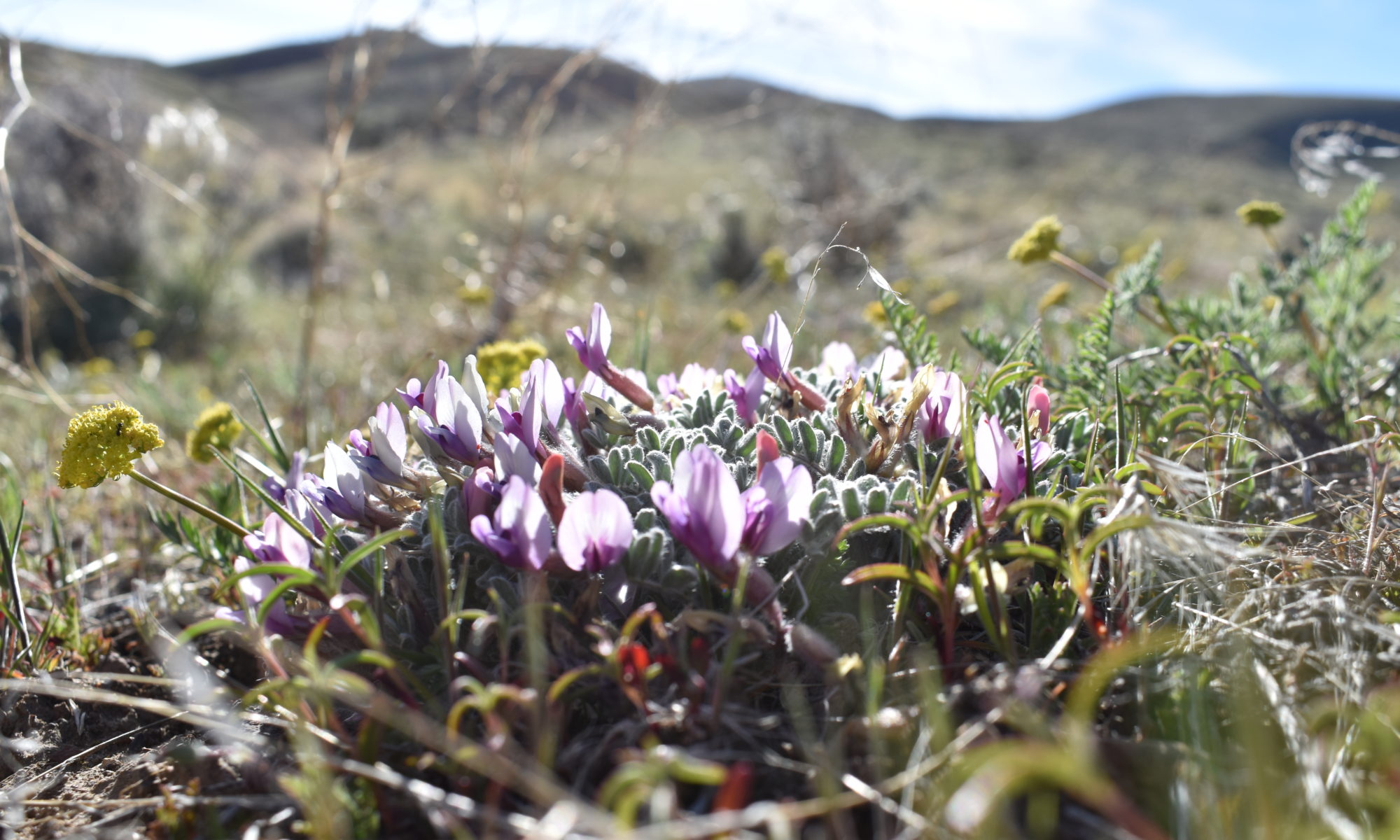I have gotten quite a few (well three) questions lately about how to best sample nectar. I am hoping to start posting more tutorials here about basic techniques in pollination ecology, and thought that this might be a great first mini-tutorial.
Capillary Tube Selection
My go to method for extracting plants with substantial nectar (i.e. >0.1 μL in volume) is glass microcapillary tubes. Micro-caps if you want to sound like a grizzled vet.
I have used both Drummond micro-caps and VWR’s house branded tubes (which I have a sneaking suspicion are made by Drummond). The ideal size depends on the flowers you are trying to sample, but they range in volume from 0.25 μL up to more than 50 μL and from 32-100mm.
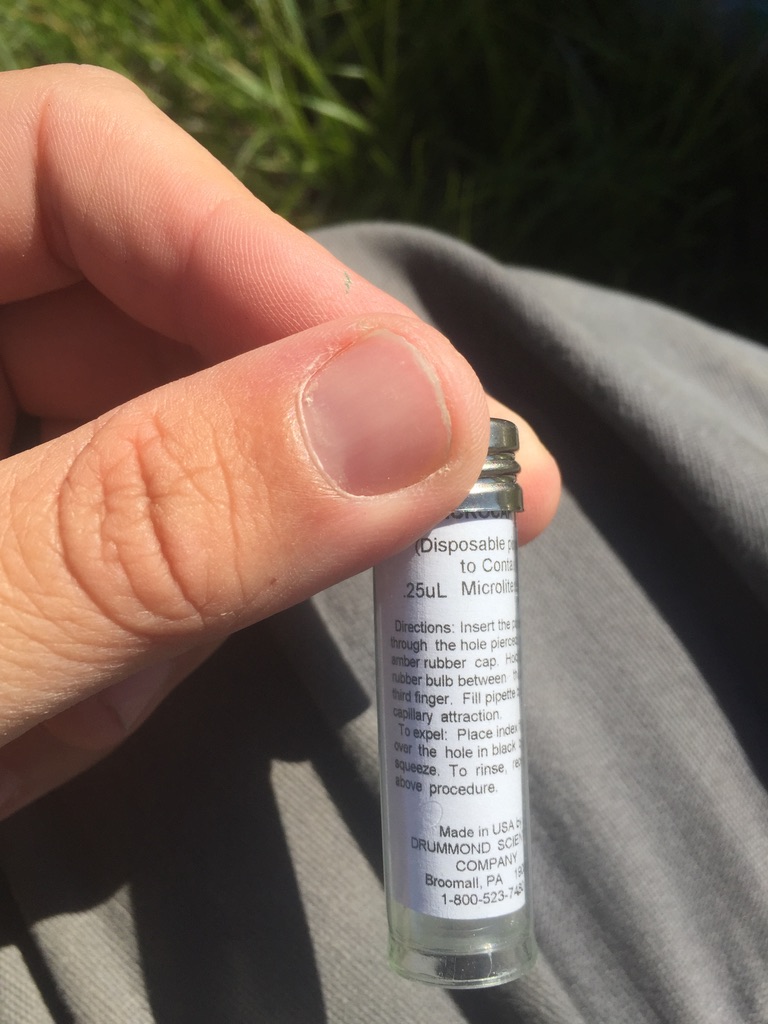
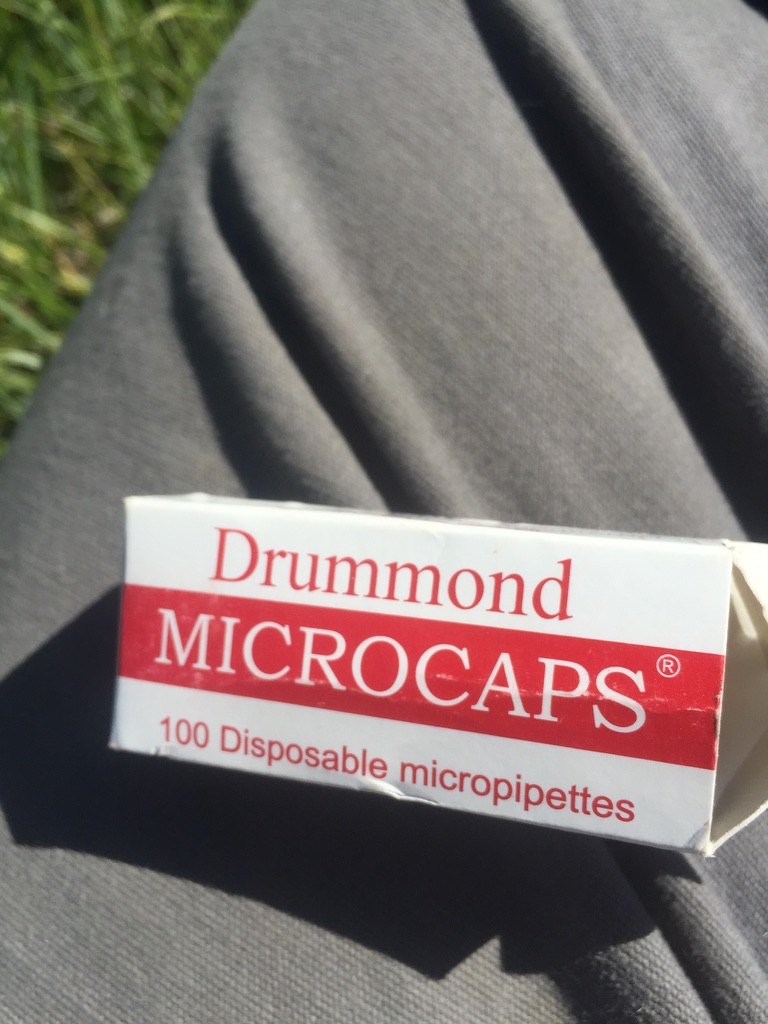

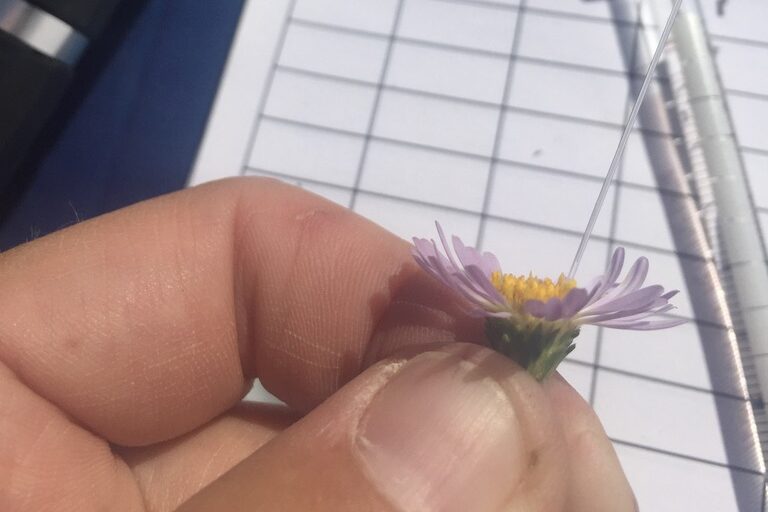
I have had good luck with the .25ul 32mm tubes for sampling small flowers (like the disc florets of asters). They are very fragile and take a steady hand, but they make measuring very small volumes possible. However, with the small tubes it is easy to clog the end with plant tissue or pollen.
I would suggest using the largest micro-cap that reliably extracts nectar from you plants. When working on Epilobium canum with Dr. Rachel Vannette we used 5μl and 10μl 100mm tubes and flowers regularly produce tens of microliters. The longer length and high volume tubes are easier to maneuver, get clogged less often, and are easier to expel nectar from for analysis, but need more volume to work.
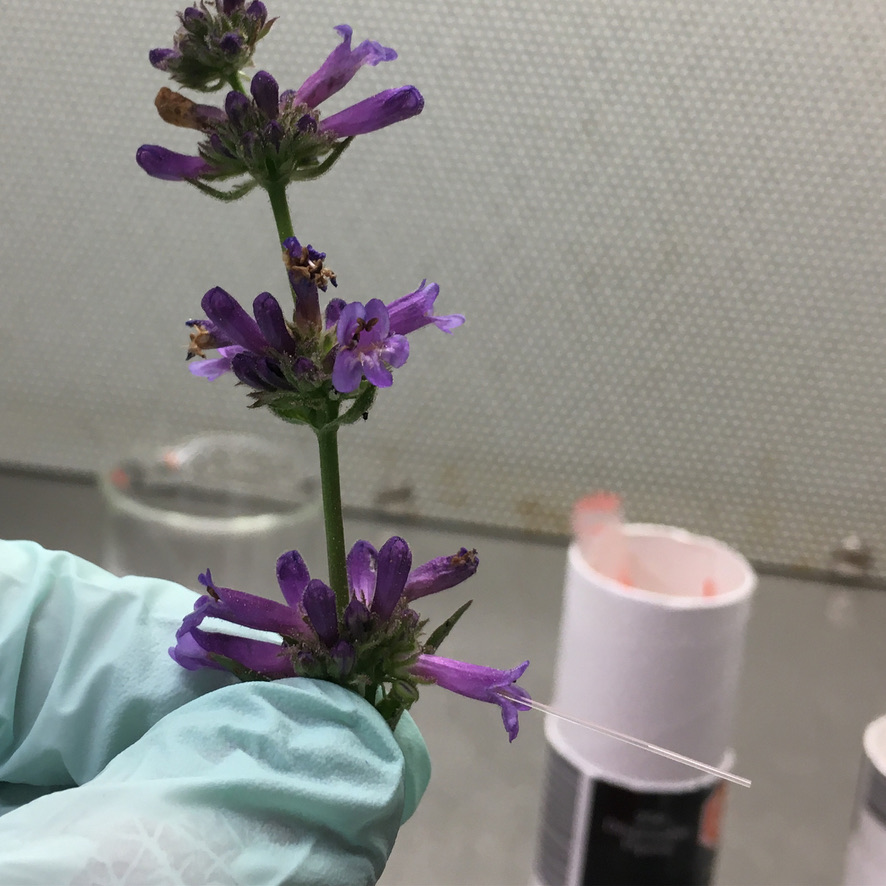

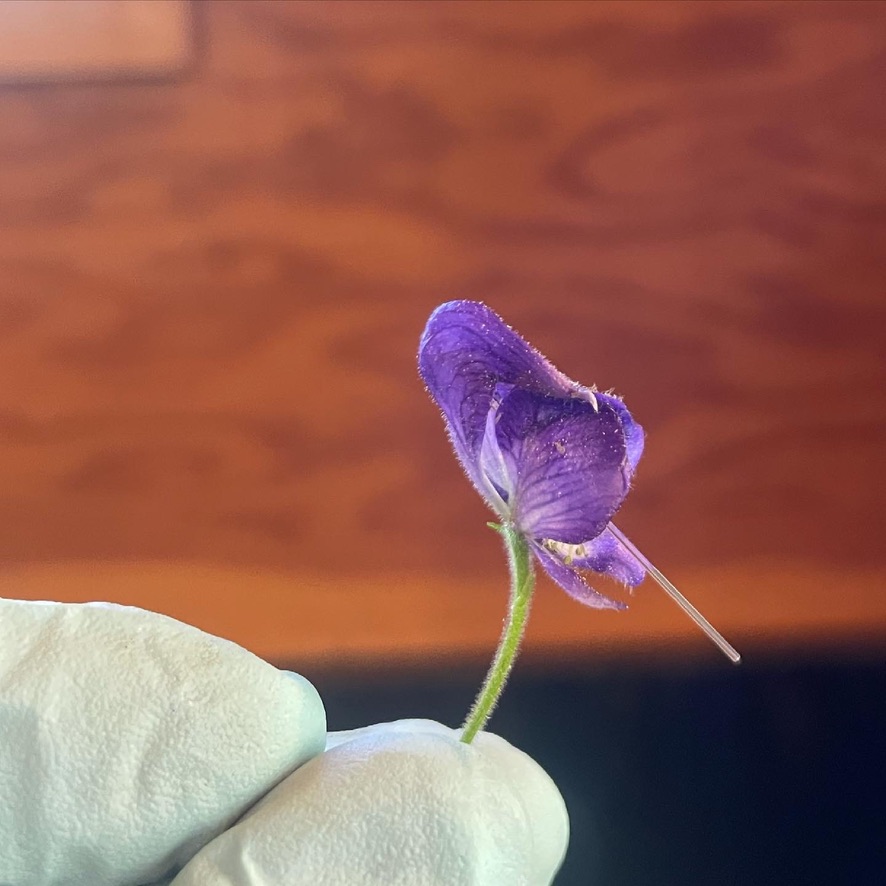
Sampling techniques
When starting with a new species, I watch bees forage on it first. They know where the nectaries are, and are more than happy to show you! That said, bees will sometimes probe even if there are not nectaries (this is very common in Lupinus spp. where I and others suspect that bees use their proboscis to increase leverage). Dying flowers with neutral red also stains nectaries (detailed in Kearns and Innoye 1993).
You can fully dissect flowers when extracting nectar to ensure that you aren’t accidentally sampling liquid from herbivores hiding away in the corolla or pushing pollen into your nectar samples. However if the corolla is very fleshy you might accidentally sample some non-nectar plant liquid. Alternatively working with whole flowers minimizes changes to nectar resulting from floral damage.
Its critical that the opening of the capillary tube contacts the nectar. For the small volume tubes (0.25 and 0.50) the thickness of the glass is larger than the opening in the tube, and if you do not get the opening of the tube to touch liquid you may get a false zero measure. Getting the tube near perpendicular to the nectary surface, and using gravity to your advantage (e.g. holding the tube beneath the flower) can be helpful here.
Measuring Volume

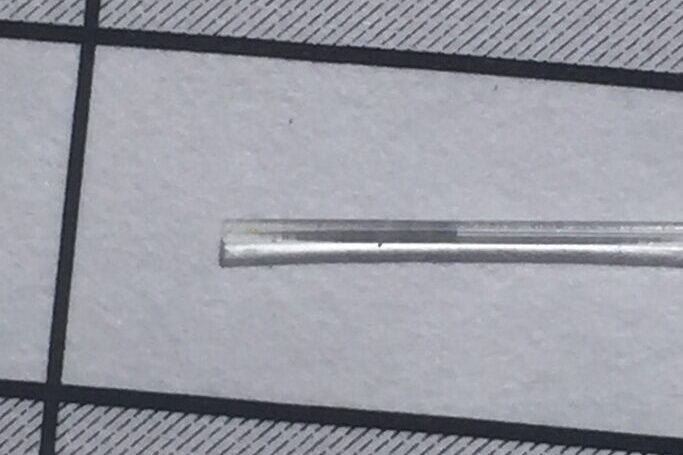
I like to measure volume using handheld calipers because when I am tired and in the field I think I make fewer mistakes with a digital readout. If you prefer analog, Shinwa makes an excellent small machinists rule that has 0.1mm markings that also works well (pictured above). Holding your cap-tube against a white and grey data sheet in direct light makes seeing and measuring the length of small volumes much easier, and if your lines are a standard width you can measure the length of the nectar column later in something like ImageJ.
Other Methods for extraction
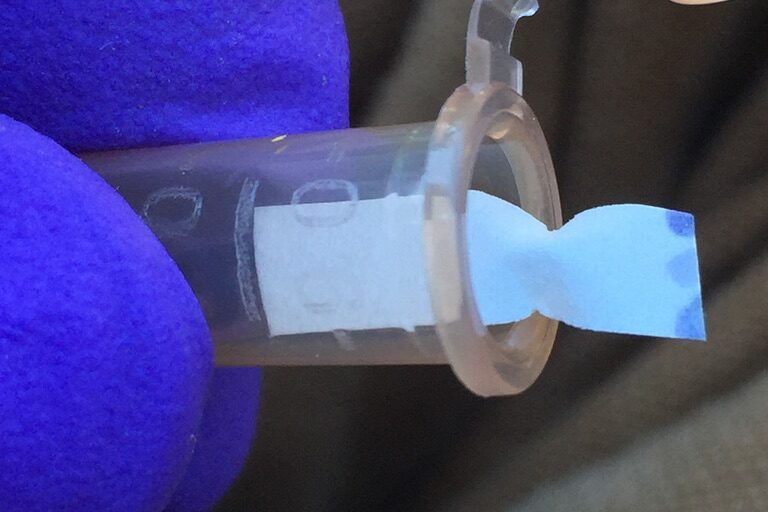
There are bunches of other options in addition to micro-caps. Some authors have used customized centrifuge tubes at low RMPs (e.g. Russell and McFrederick 2021). Adsorption with per-weighed sterile filter paper is common if you are trying to get dry solute weight. In Kearns and Innoye, 1993 there is a technique from James Thompson that involves creating custom thread wicks that I have always also wanted to try. Additionally, bringing along DI water for rinsing/diluting viscous nectar may be critical in your system.
In my experience, centrifugation is not all that effective for many floral morphologies though. I’ve found it can damage plant tissues, and I have never been confident I am getting only nectar. But, I often read of methods that use sterile glass wool (or some other cushioning) to minimize plant damage).
Crude Measures of Sugar Content (BRIX)
I I have used the Bellingham and Stanley extra low volume refractometer(available at Fisher). To expel nectar onto the refractometer It is crucial that you do not mix aspirators between tube diameters, especially for the low volume tubes. Once the rubber stopper is pierced by a larger tube, the aspirators work much less well for small tubes. You can also create a mouth aspirator (these come with the VWR brand tubes) to expel nectar by connecting surgical tubing to the included glass apparatus that comes with the Drummond caps.
Make sure that you calibrate your refractometer regularly- especially in the field. The zero point can move quite a bit as the tool warms or cools. You can do this on most refractometers using a thumbscrew on the ventral side of the business end and some distilled water.
With small volumes, I have had much better success placing the droplet of nectar on the plastic cover rather than the glass surface. The plastic cover has a small raised circle that is meant to disperse the sample. If you place the sample on the glass, it can be hard to ensure that the droplet is centered on that circle, but if you place it directly on the cover it is much easier. The only caveat with that technique is that you have to be a little more careful when lowering the cover.
For samples less than 1μL Hamilton syringes work great for diluting samples with a known volume of DI water. Lately though, I have been trying out cheap “field pipettes” from online retailers (e.g. Oni Labs). I am impressed with their accuracy out of the box, but a little worried that their calibration point will creep. I will update after a year in the field though I am thinking of adding a little light thread lock to the calibration screw!
Wrapping Up!
There are many other considerations when extracting nectar. I may make a second post about tips and tricks to maximize your success but this seems more than long enough for now. If you want more details on nectar measurements there is a whole chapter of info in Kearns and Innoye, 1993. It is always on my desk and I reference it frequently – I highly recommend getting a copy! If you have any other secret tips for successful nectar measures let me know!
